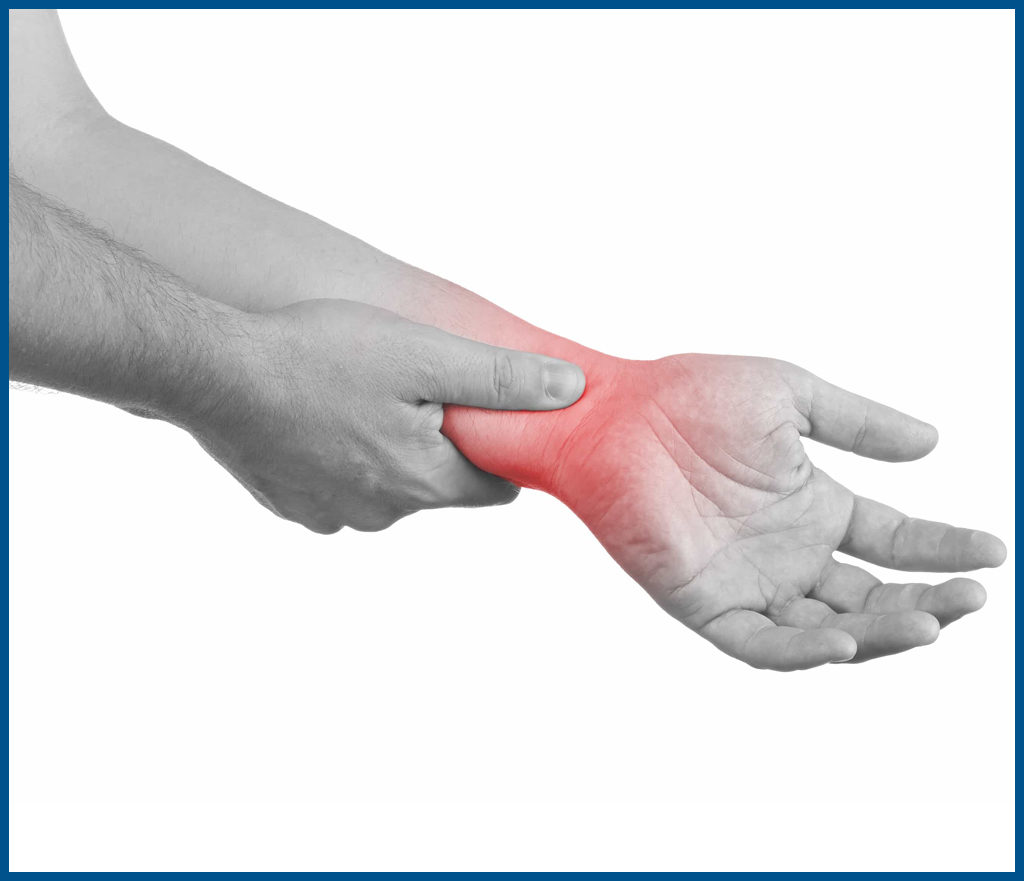In our day-to-day life, one of the frequent complaints we hear is wrist pain. A sudden stiffness in the wrist bones and especially on the fingers is the most common symptom. A question that arises is why there is a sudden pain and how to overcome it? Most of us would think of a quick home remedy to heal the pain but trust me there are various other causes behind this wrist and finger pain. Medical professionals recommend X-Rays to understand the severity of the cause. Let’s find out what triggers the pain in the wrist and hand.
Wrist Sprain
This condition occurs when the ligament is overstretched. For example, if we fell or bend the wrist backward, there is a great chance for the ligament to get affected. The treatment method involves resting the affected region for a minimum of 48 hours, compressing with a wrist bandage, ice, or hot water pack to reduce the inflammation. In worst cases, seek your doctor for quick healing.
Osteoarthritis
This is another cause for the sudden inflammation and pain in both hands and wrist. This condition occurs when bone cartilage wears off. Often, people who are in middle age and older suffer from osteoarthritis. Treatment methods include physiotherapies, pain killers, and in rare cases surgeries.
Rheumatoid Arthritis
This is an autoimmune disease that mainly affects the tissues in the joints causing swelling in the wrist and hand. The diagnosis involves taking a blood test to check the WBC count, C-reactive protein (CRP) level to identify the inflammatory process in the body. The other methods include imaging tests like X-Rays, MRI and ultrasound tests to help understand the severity of the disease in the body. There is no cure for rheumatoid arthritis; there are only medications to remit the symptoms.
Carpel Tunnel Syndrome
Carpel tunnel syndrome or CTS mostly affects people between the ages of 45 and 64 years. It is more common in women than in men. CTS is described as nerve entrapment in which the body’s peripheral nerves are compressed or traumatized. The widespread use of computers is the most common reason for this nerve damage in the wrist. Treatment involves simple home remedies like reducing pressure given on the nerves. It is often advised to “give rest” to reduce the pain in the wrist joint and to avoid hand movements repetitively.
Repetitive Motion Syndrome
This is more like we discussed earlier, the CTS. Overworking and Overpressure on the joints can cause them to swell and pain in finger joints and wrist. So if you’re typing or knitting too much, just give rest for some time to get a cure.
Tendonitis
This condition is more common among sportspeople. Putting too much strain on the tendons during sport may cause them to swell. For people who play tennis, often experience pain on top of hand and wrist. Simple remedies like giving rest to the working hand or doing simple self physiotherapies or ice/hot water packages can reduce the symptoms as well as pain over time.
Ganglion Cyst
Cysts are the major reason behind wrist hand and finger pain. These are often filled with liquid, gas, or semisolid. A blockage in the body’s drainage system is called a cyst. Treatment may depend on the type of cyst, size, location, and degree of discomfort caused. Cyst occurs in any part of the body. For very large cysts, your medical professional suggest surgical removal.
Wrist and Finger Pain Symptoms
Some people experience sharp pain whereas for others it is dull. It depends on the location of the problem.
Swelling and bruising are the common complaints in wrist and finger pain.
Other common symptoms include weakness in the hand, numbness, tingling, etc.
Immobility or stiffness in the fingers (this is common in rheumatoid arthritis).
When to See Your Doctor?
Often, if the complications are interfering in carrying out the everyday activities, then visit your doctor immediately.
Common Diagnosis for Wrist Pain
Imaging techniques like X-Ray, MRI, CT scan, etc. are used to study the severity and swelling of the affected region.
Arthroscopy is a diagnostic and treatment method in which a small camera is inserted through a small cut (like a buttonhole) in the wrist to get a high-definition image of the issue in the joint. This is widely used when the imaging techniques are left unanswered to your doctor’s several diagnostic questions. Conditions like torn ligaments, damaged cartilage are treated using this method. Typically this is recommended only if the “rest” have been a failure.
Prevention Is Much Better
Follow these simple lifestyle changes to avoid suffering from wrist or finger pain.
So, if you are using computers for long hours and involve too much typing works, consider buying wrist-friendly keyboards.
Keeping the wrist in a relaxed position and following a proper posture when sitting/working at a workstation help avoid severe pain in the wrist and joints.
Avoid putting too much stress when working or playing. Give ample rest in between your works to reduce overpressure on the nerves or the finger joints.
When playing use proper wrist and knee guards to avoid severe injuries or damages to the ligaments and tendons and even bones.
Wrapping It Up
Wrist pain is not a big headache unless it gives immobility to the entire hand. It is treatable and the costs are affordable. Early treatment at home is more than enough to treat the condition. If this persists for more than 48 hours, then never hesitate to get the right consultation from your doctor.
